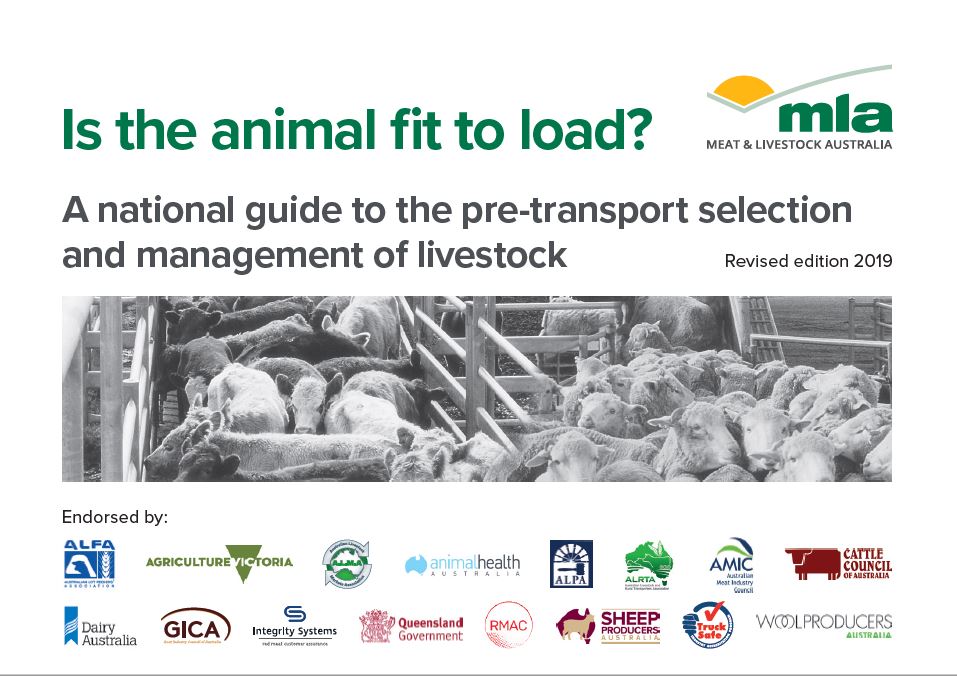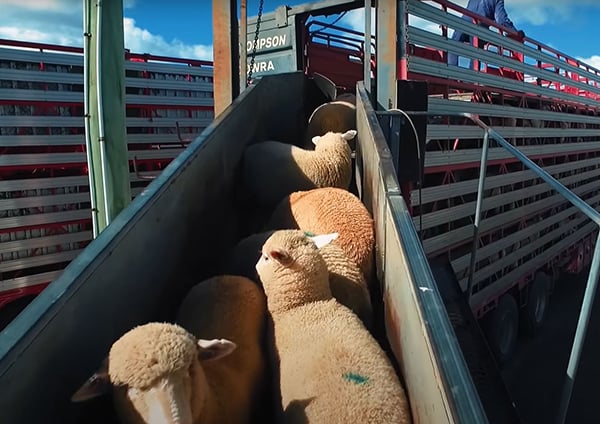Understand their roles and responsibilities when transporting livestock
Producers, agents, transporters and buyers must understand their roles and responsibilities when transporting livestock to comply with the Australian Animal Welfare Standards and Guidelines for the Land Transport of Livestock and relevant state and territory legislation.
Here, you will find information to help you decide if an animal is fit to be loaded for transport by road or rail.
Who is the ‘person in charge’ of animals?
The ‘person in charge’ of animals is responsible for the welfare of the animal(s) under their control and reducing the risk to their welfare.
If the ‘person in charge’ prepares to transport or transports an animal that is unfit, that person commits an act of cruelty upon that animal and may be liable to prosecution under state or territory legislation. As such, it is also unacceptable for any party to coerce or intimidate the ‘person in charge’ into loading an animal that is not fit for the journey.
The ‘person in charge’ of animals changes at different points during the transport process (see table below).
|
Person in charge of animals |
When the person is responsible |
|
Producer/consignor |
Prior to loading |
|
Transporter/driver |
Loading, unloading and during the journey |
|
Receiver* (e.g. processor, agent, saleyard manager/superintendent) |
After unloading |
*For more detail on receiver responsibilities refer to animalwelfarestandards.net.au/saleyards-and-depots
|
The producer/consignor is responsible for: |
The transporter/driver (except for rail) is responsible for: |
|
|
Note: Variations exist between states/territories. Please check relevant state/territory legislation.
How to assess if the animal is ‘fit to load’?
Good animal husbandry
Practicing good animal husbandry ensures that the basic needs of animals are met and is essential for maintaining acceptable animal welfare standards.
✓ a level of nutrition adequate to sustain good health and welfare
✓ access to sufficient water of suitable quality and quantity to meet physiological needs
✓ social contact with other livestock of the same species
✓ sufficient space to stand, lie and stretch limbs, adequate opportunity to move freely and exhibit normal patterns of behaviour
✓ the facilities, equipment, husbandry and handling procedures used minimise the stress to livestock
✓ the risk of pain, injury or disease is minimised
✓ provision of appropriate treatment including euthanasia if necessary
✓ provision of reasonable precautions against extremes of weather or natural disasters.
Preparing animals for transport
Correctly preparing livestock for transport is a vital part of any journey. Well prepared animals travel better, are less stressed and animal welfare issues are less likely to occur. Remember, if in doubt, leave it out.
✓ resting recently mustered livestock prior to loading
✓ co-mingling of animals from different mobs well in advance of the journey
✓ recording and communicating the time off feed and water
✓ competent selection of livestock prior to loading
✓ performing husbandry practices (e.g. horn tipping) well in advance of the journey
✓ planning the journey with consideration given to the length of the intended journey and weather conditions
✓ use appropriate loading facilities that are fit for purpose according to the Australian Animal Welfare Standards and Guidelines for Livestock at Saleyards and Depots (see page 27 of the Is the animal fit to load? guide) and the Australian Standard for Livestock loading/unloading ramps and forcing pens
✓ make sure all movement documents and paperwork travelling with the livestock is complete and signed, for example an LPA NVD/Waybill, Animal Health Declarations
✓ knowing who to contact in case of an emergency.
Resources

National guide to help producers, agents, buyers and transporters decide if an animal is fit to be loaded for transport by road or rail.

Watch this short video to learn more about what to look out for when loading and transporting livestock.

Download this handy checklist to use in the yards next time you are loading livestock.










